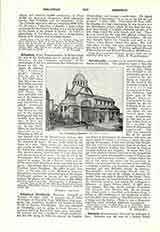

Sebastopolis, a titular see in Armenia Prima, suffragan of Sebastia. The primitive name of this city was Carana, dependent on Zela, which was included in the principality given to Ateporix by Anthony or Augustus. On the death of the Galatians tetrarch (3or 2 B.C.) it was incorporated in Pontus Galaticus and made part of the Roman Empire. Carana formed a city peopled by the inhabitants of the surrounding country, and whose era was dated from this event. It is probably at that time or perhaps a little later, in19 A.D. that the name of Sebastopolis appeared. The town was organized like all the provincial cities; it worshipped the emperors; with some adjacent towns it formed a conventus of which the capital was Neocaesarea; it had coins dating from Trajan. The city received its importance from its position on the great highway leading from Tavium in Galatea towards Sebastia and Armenia. It seems that Trajan, who annexed Pontus Galaticus to the reorganized Cappadocia, made Sebastopolis a center of Roman culture in a still barbarous country. Adrian visited the city in 124; under this prince and his successors its beauty was increased by the erection of new edifices, a stadium, a portico, a gymnasium, and temples; the principal god was Hercules, whence its surname, Heracleopolis. Under Justinian (Novell. xxxi, 1), Sebastopolis was one of the villages of Armenia Secunda; later one finds it placed by the Greek “Noti-tiae episcopatum” in Armenia Secunda or Prima, until the thirteenth century, first among the suffragans of Sebastia. Le Quien (Oriens Christ, I, 425) gives four bishops: Meletius, fourth century; Cecropius, 451; Gregory, 458; Photius, 692. By the inscription Sebastopolis is identified with Soulou Serai, avillage of 500 inhabitants to the southeast of Zilehf formerly Zela, vilayet of Sivas. The chief ancient relic is a bridge over the Scylax. There is also a Byzantine cemetery which furnishes numerous inscriptions.
S. PETRIDES

